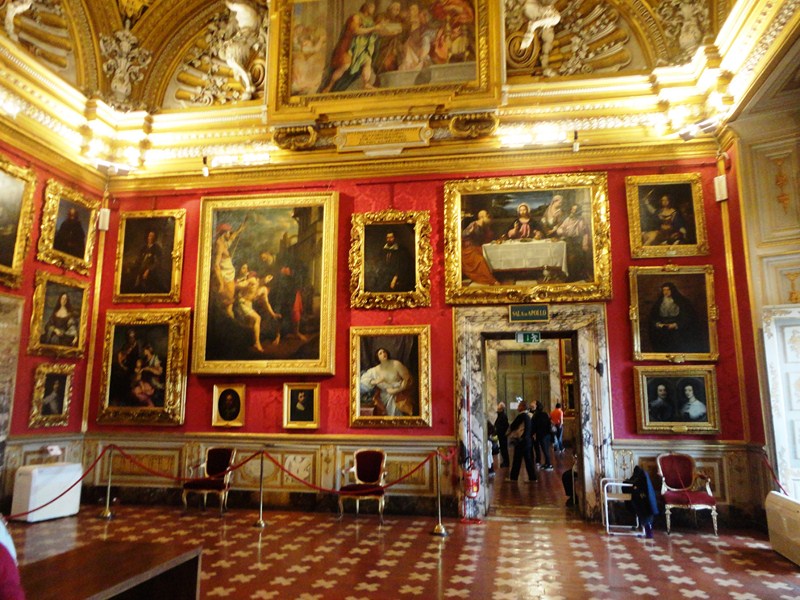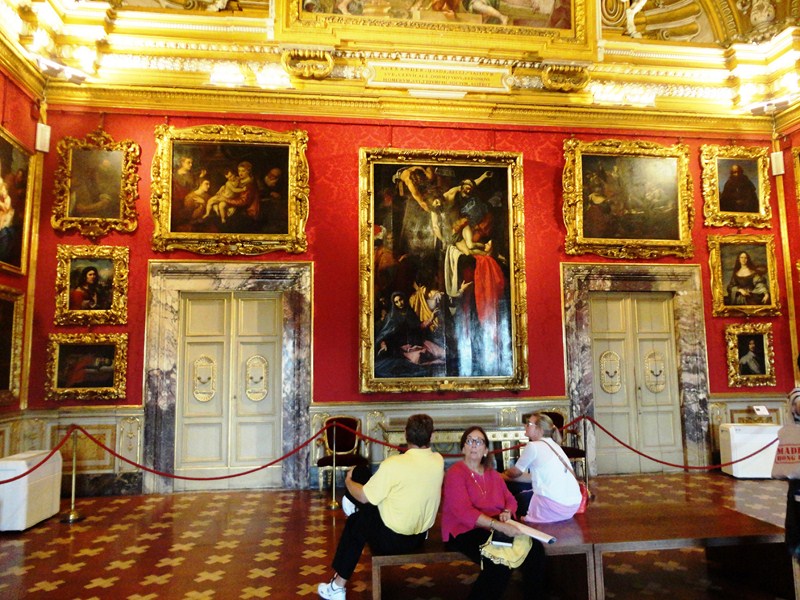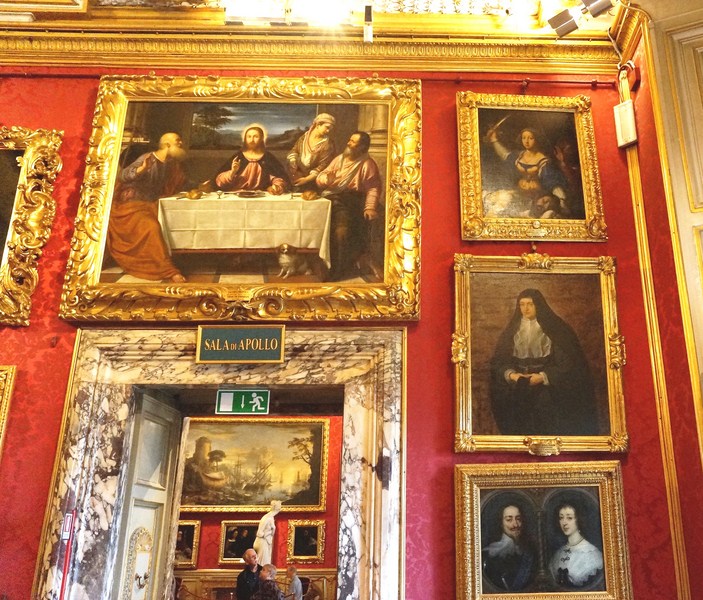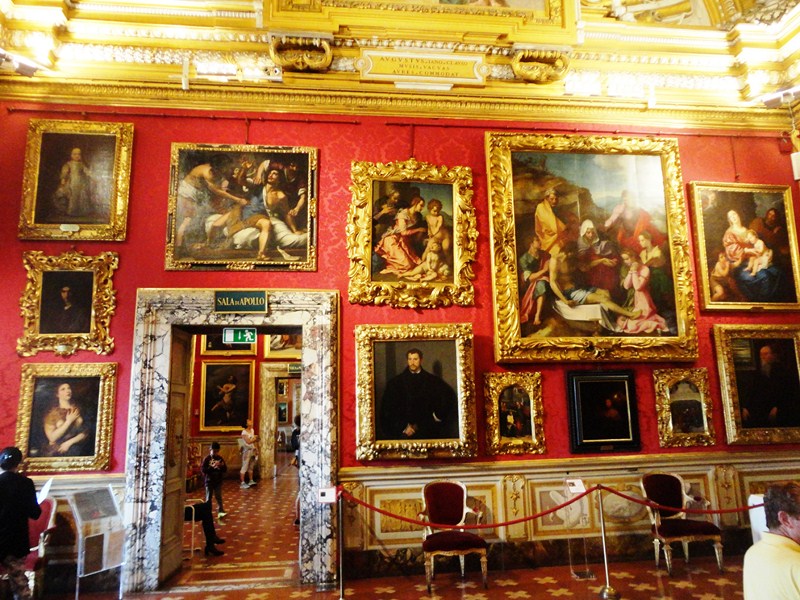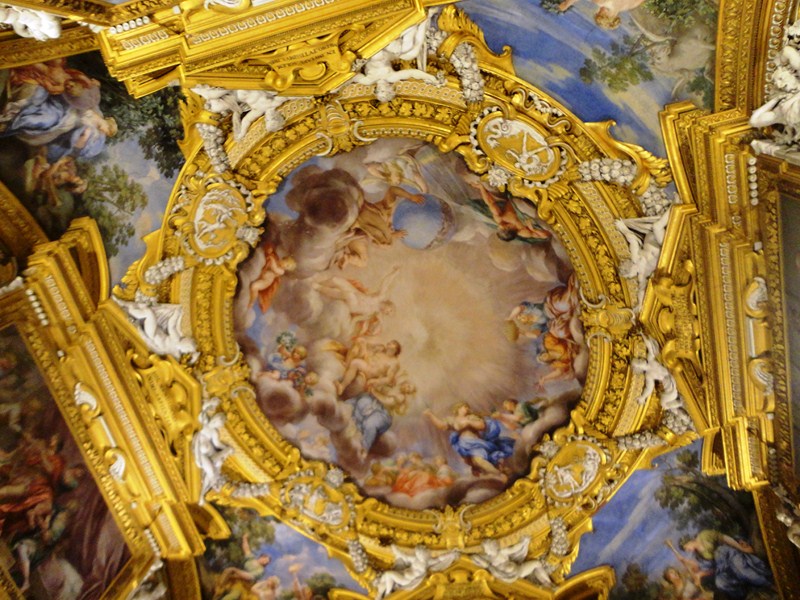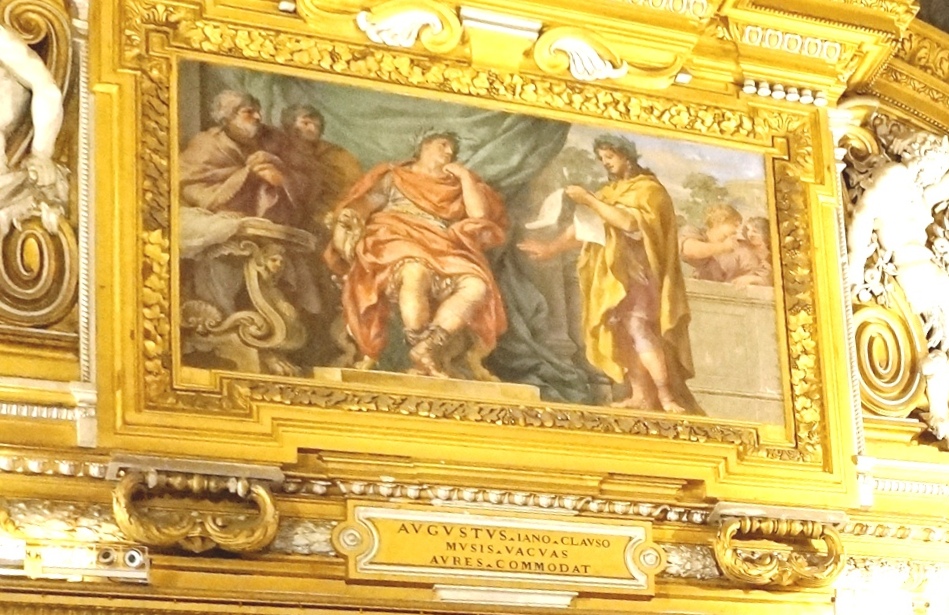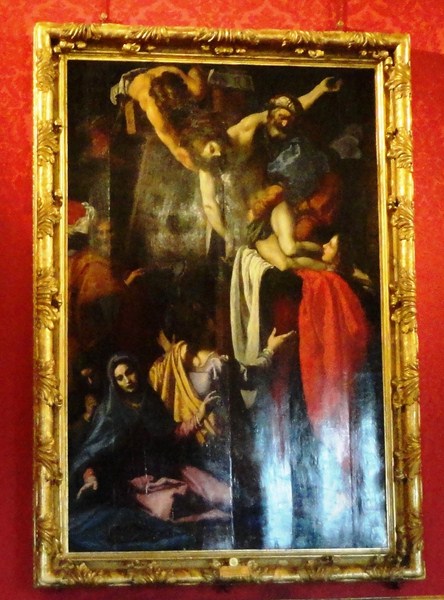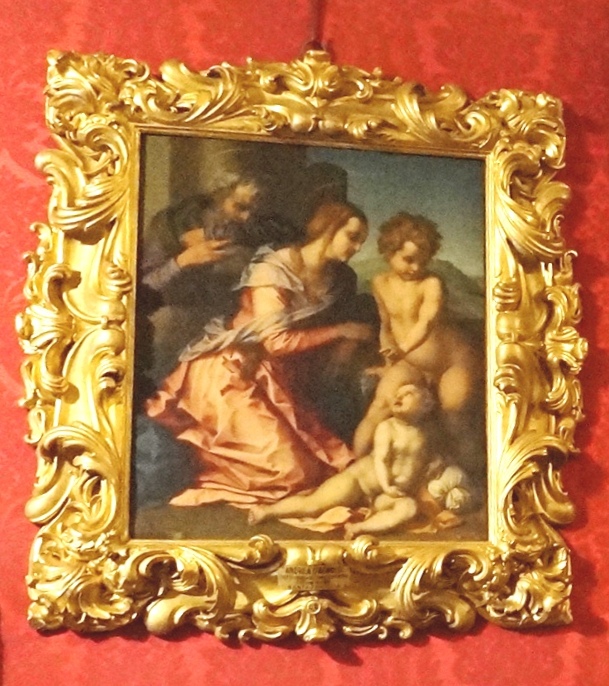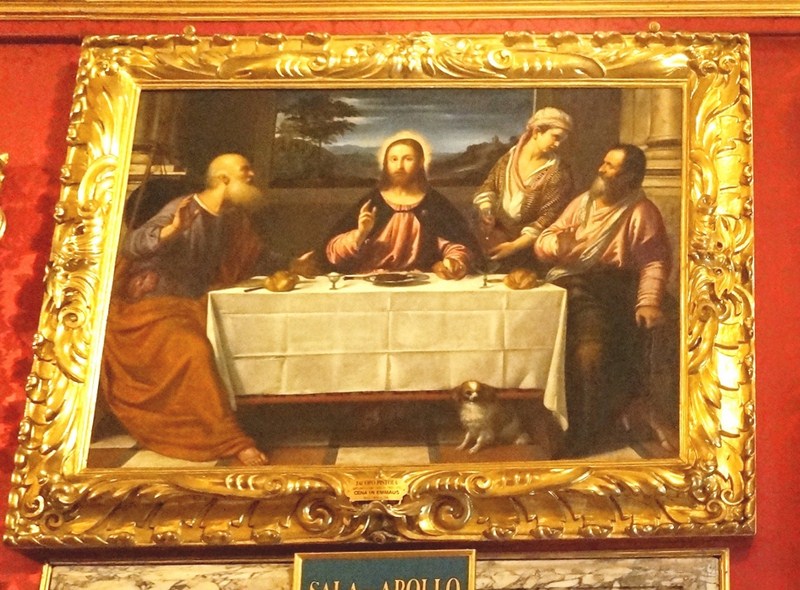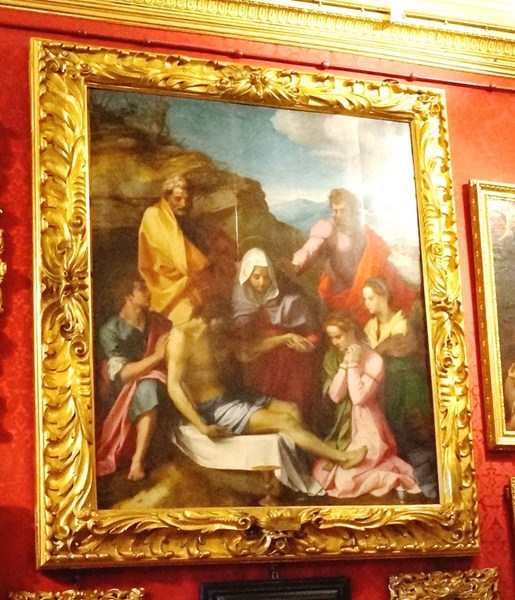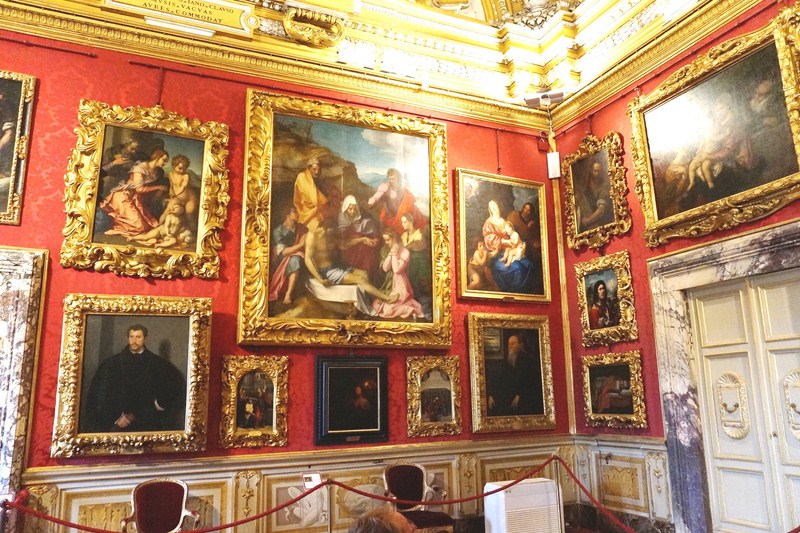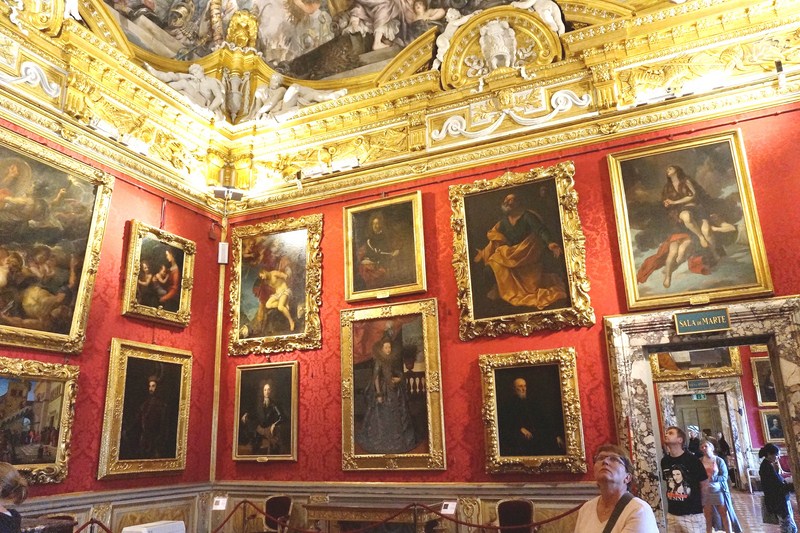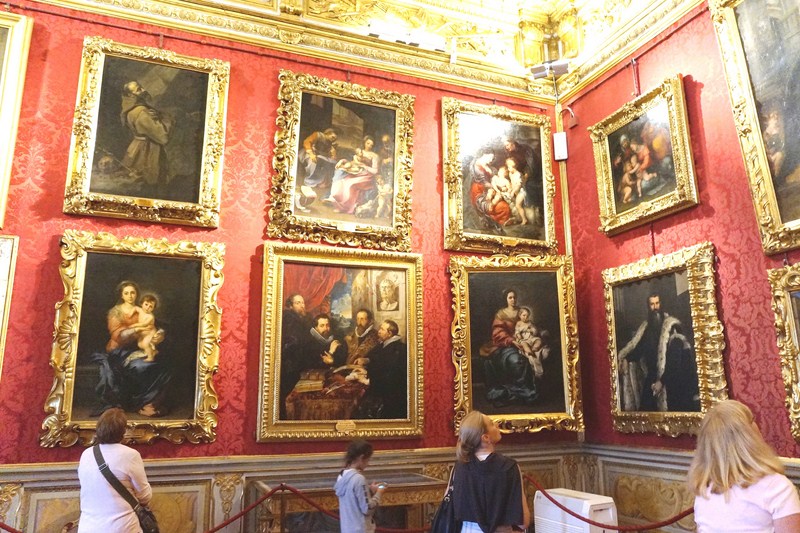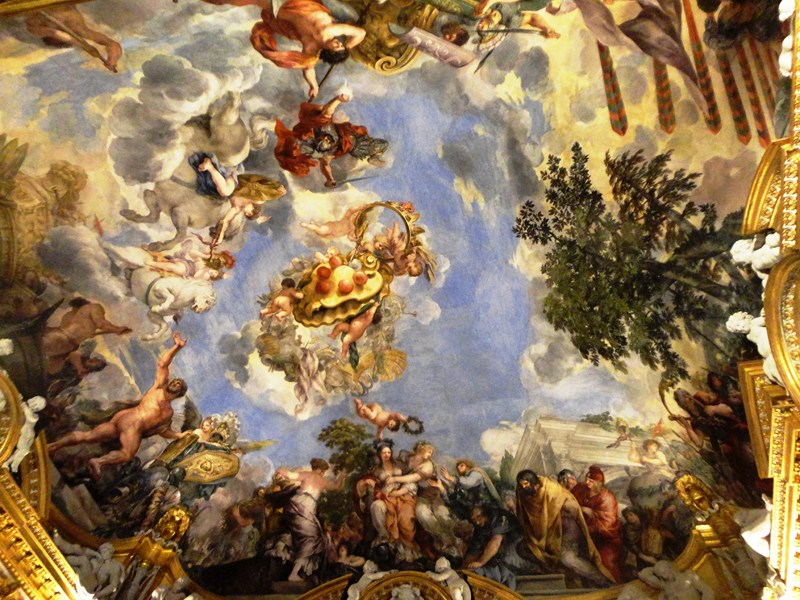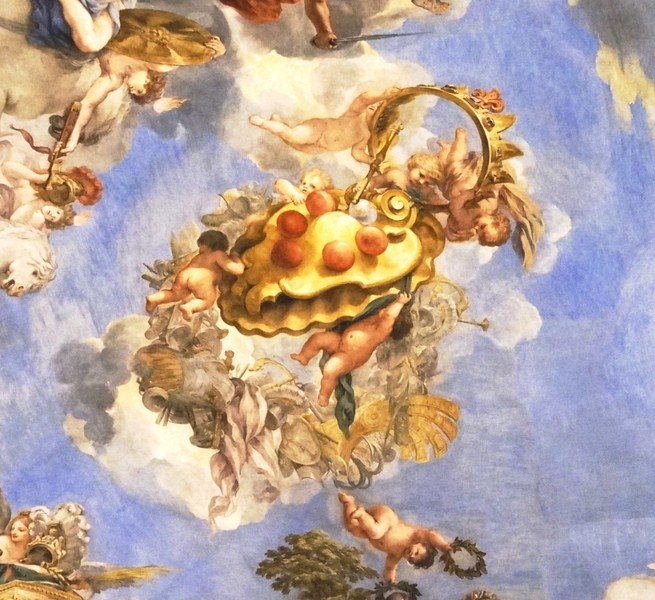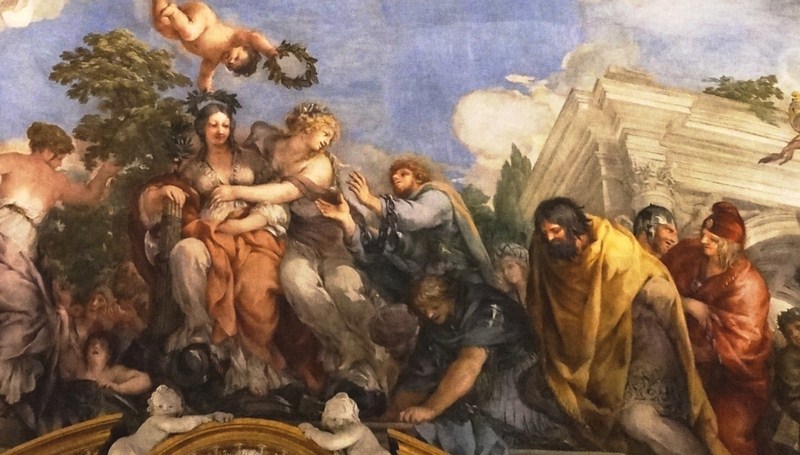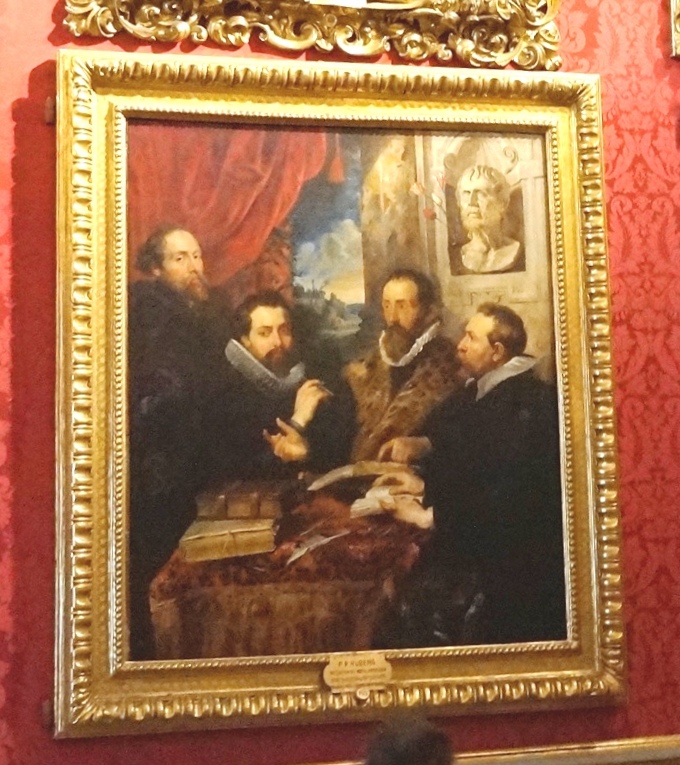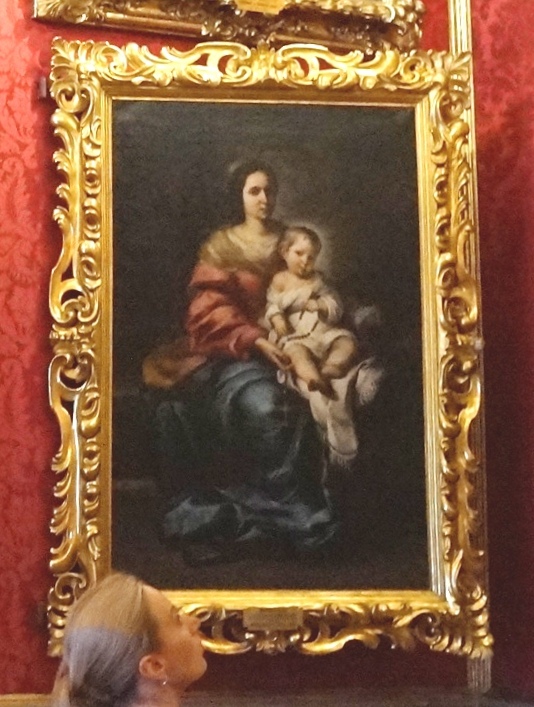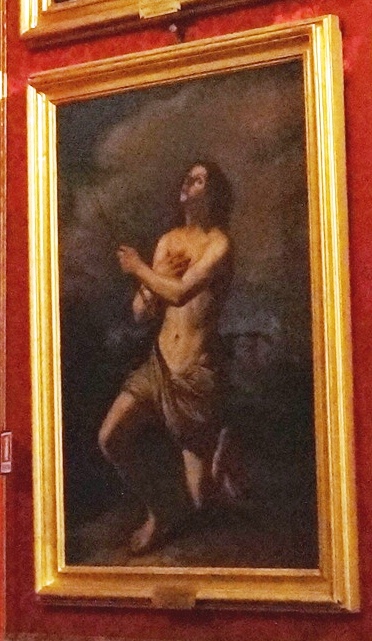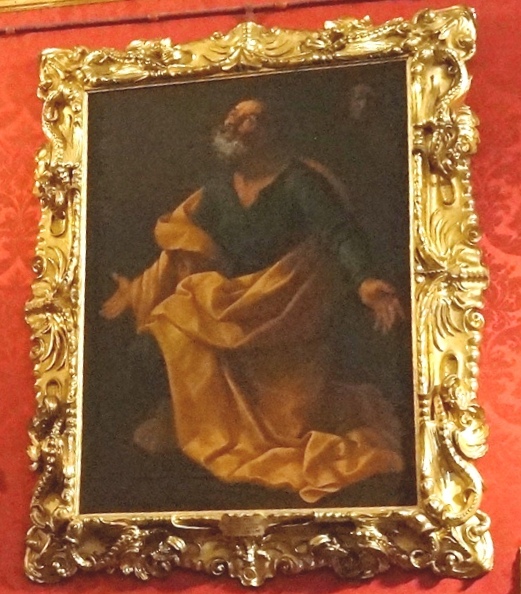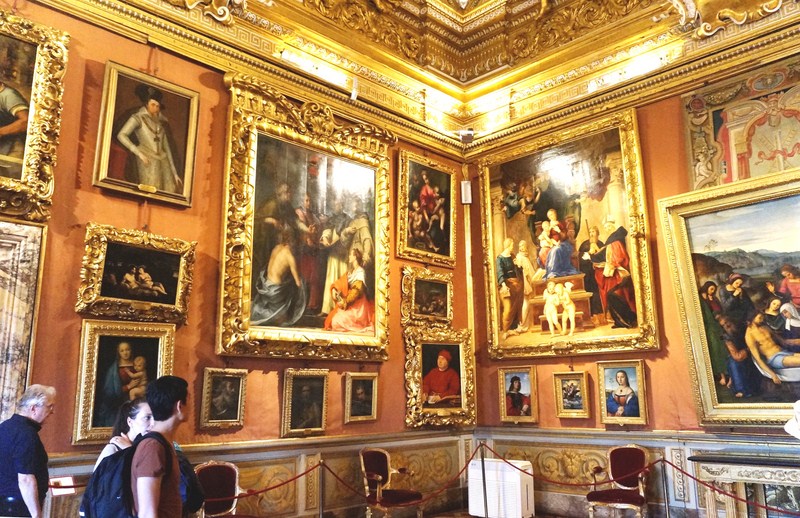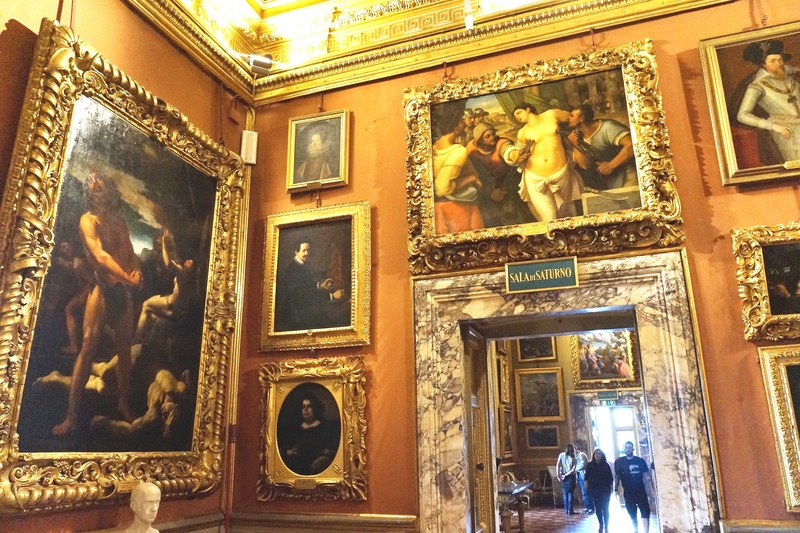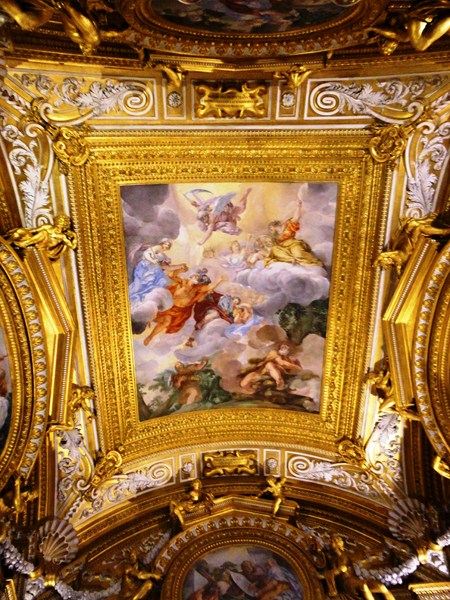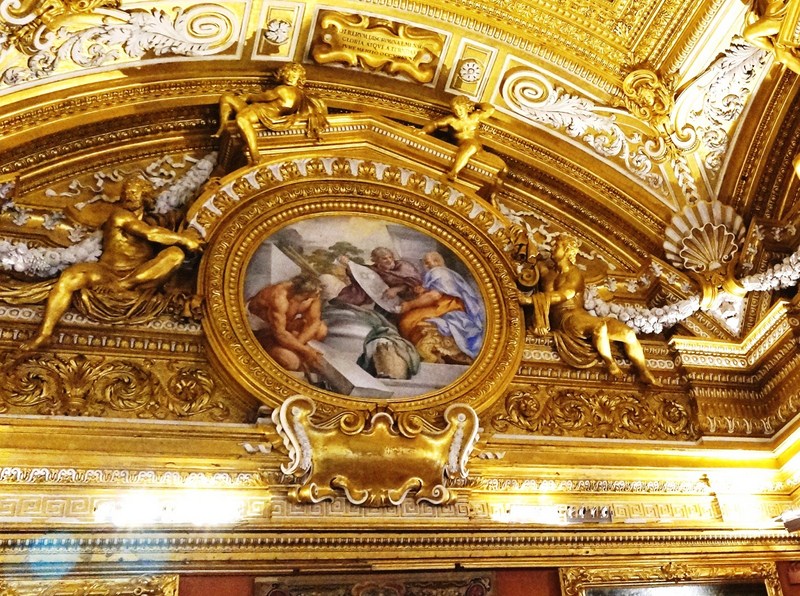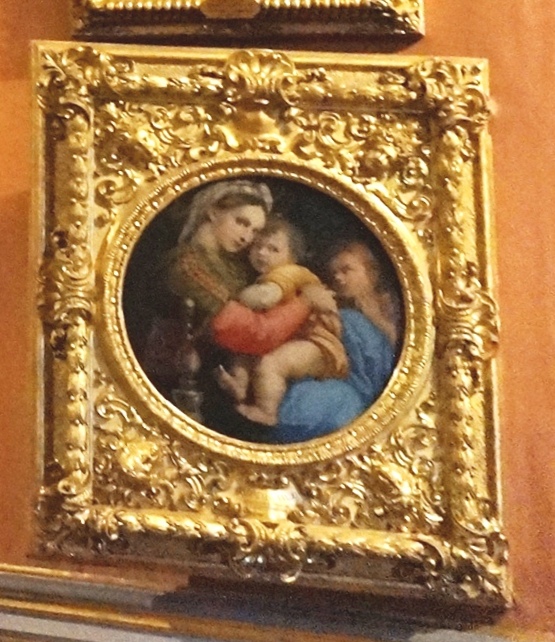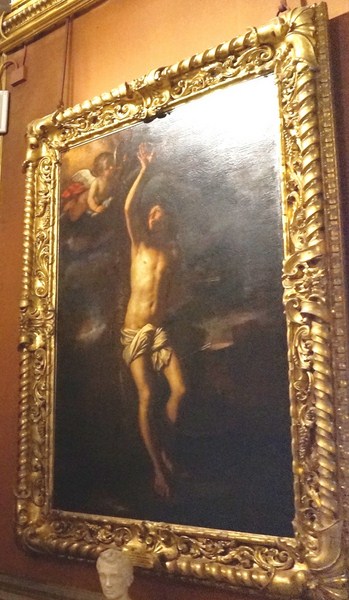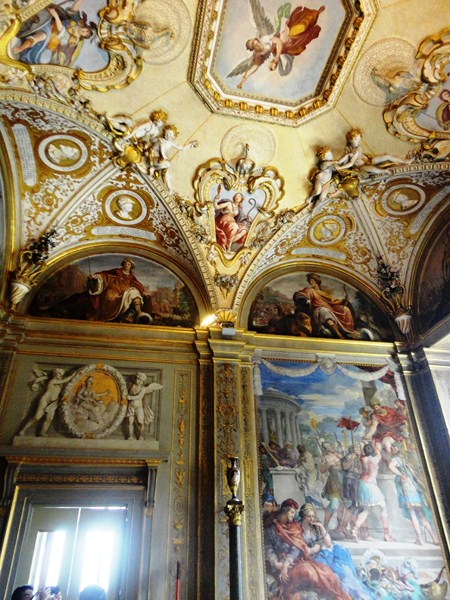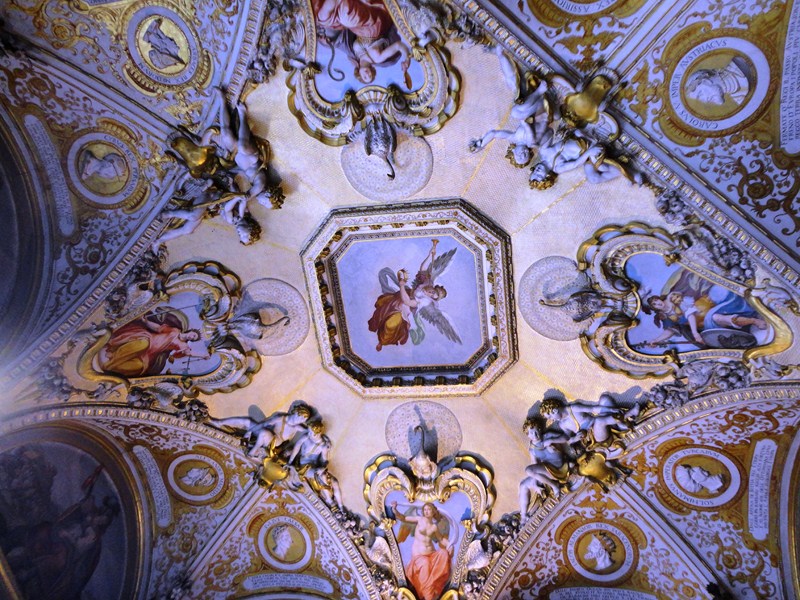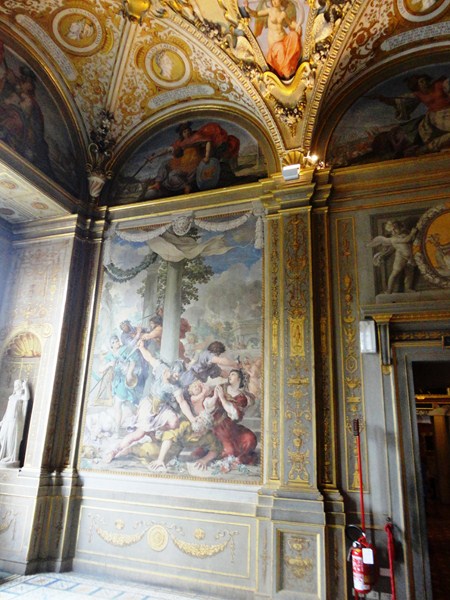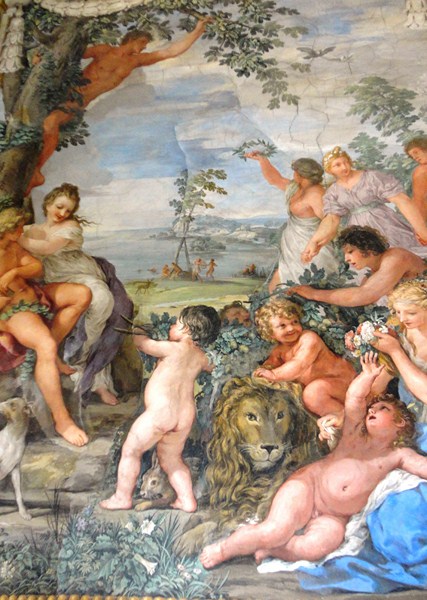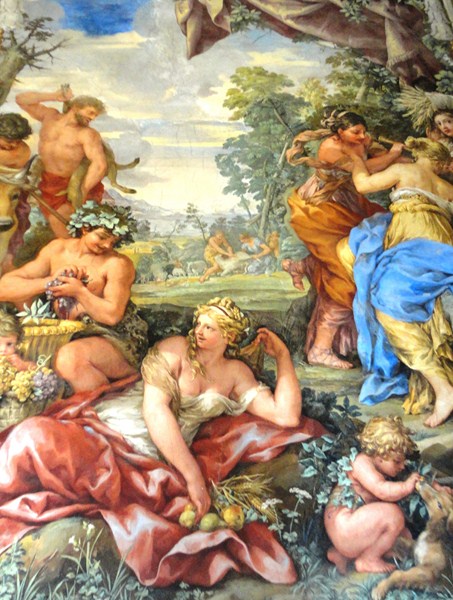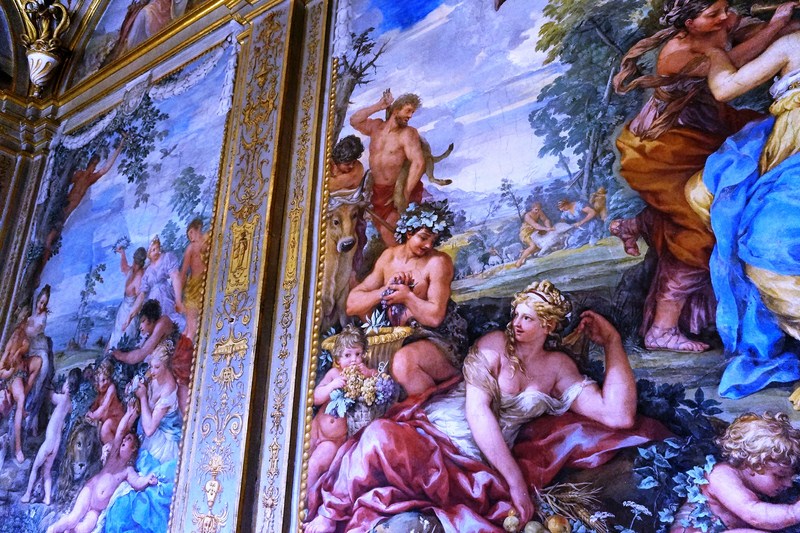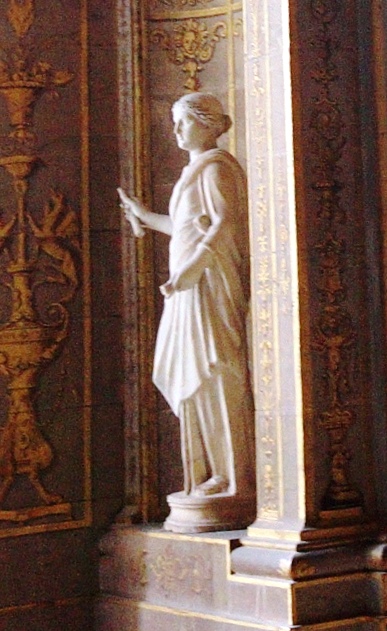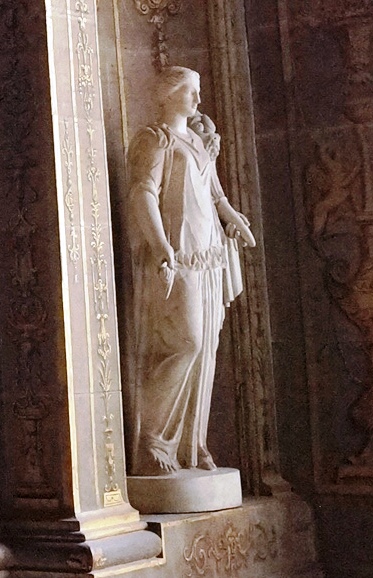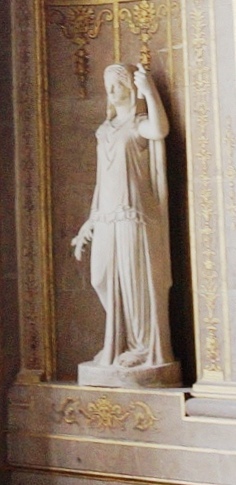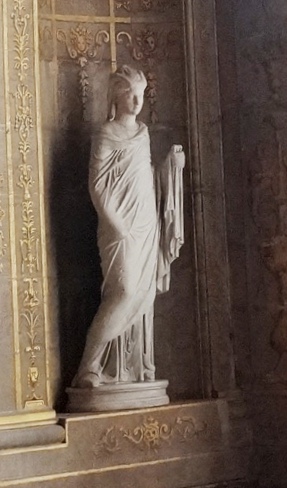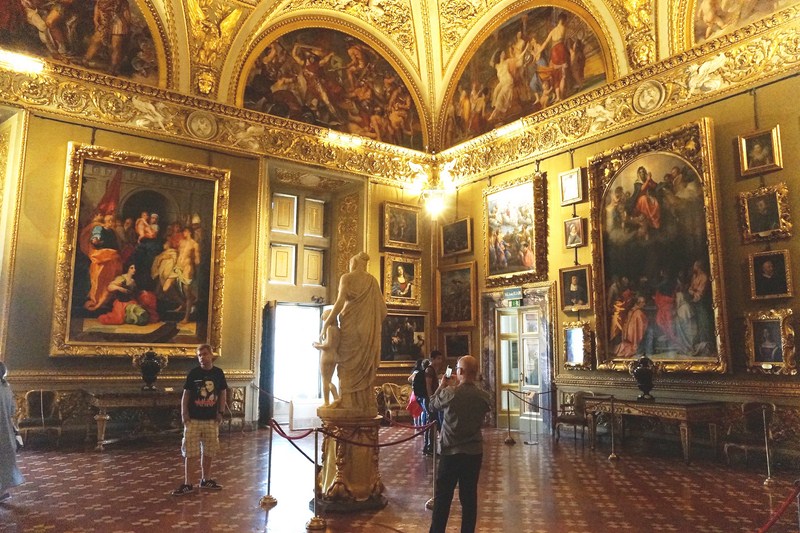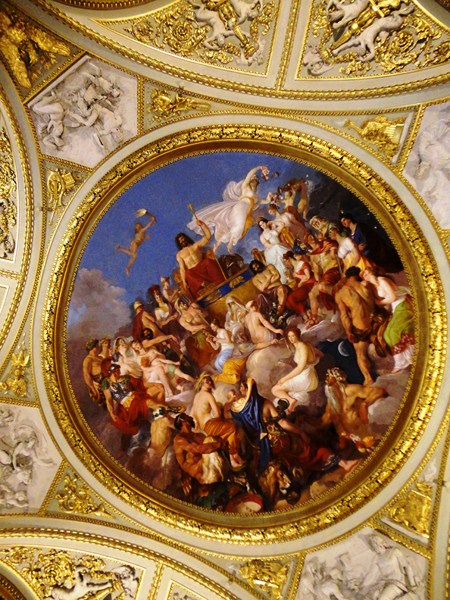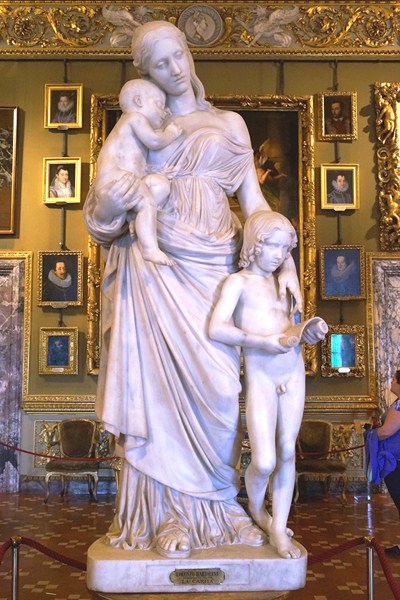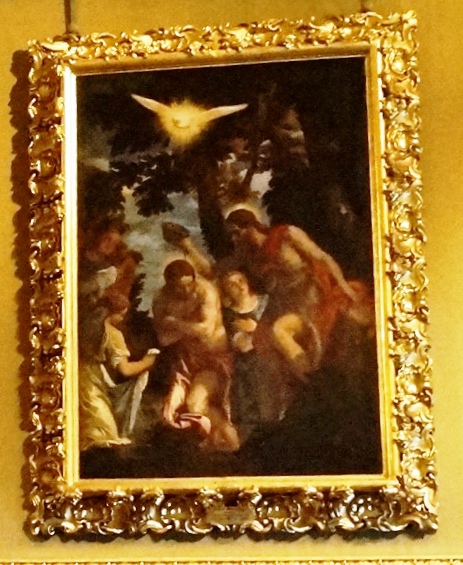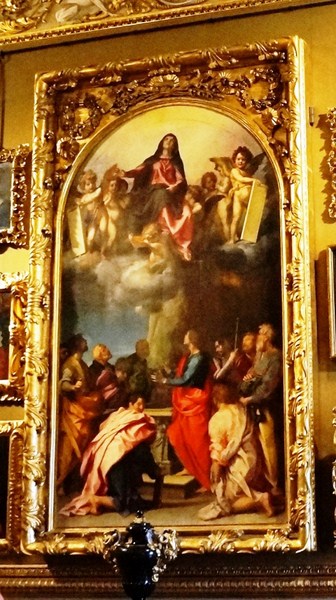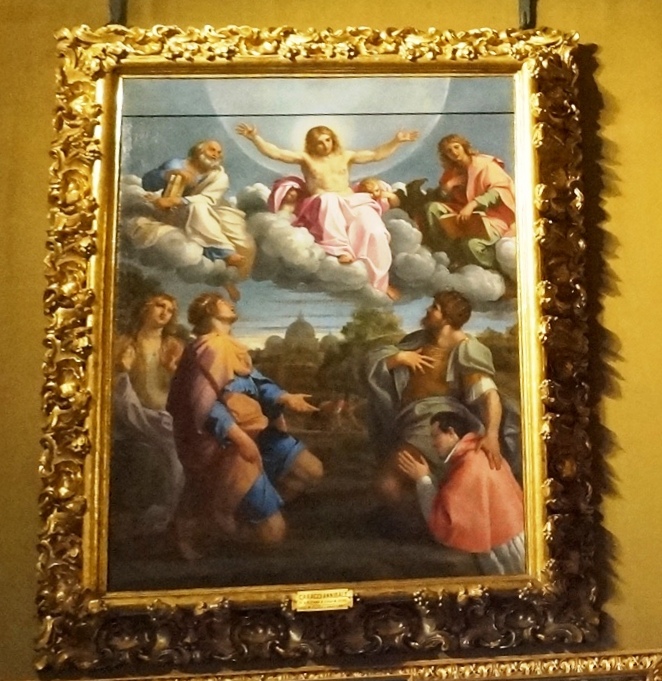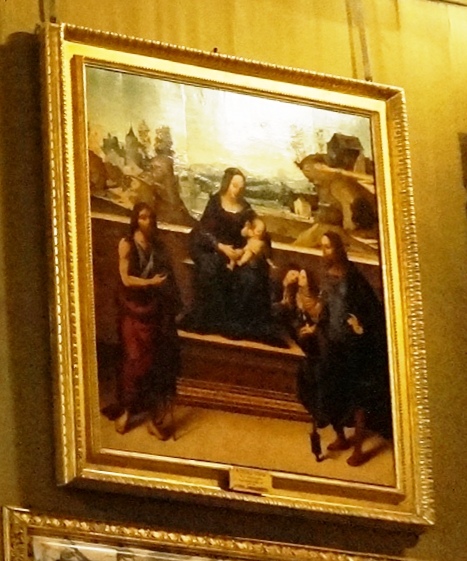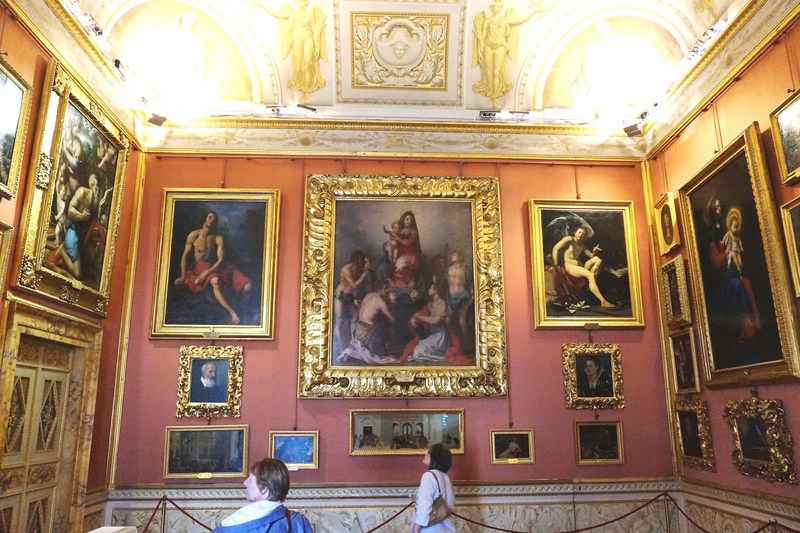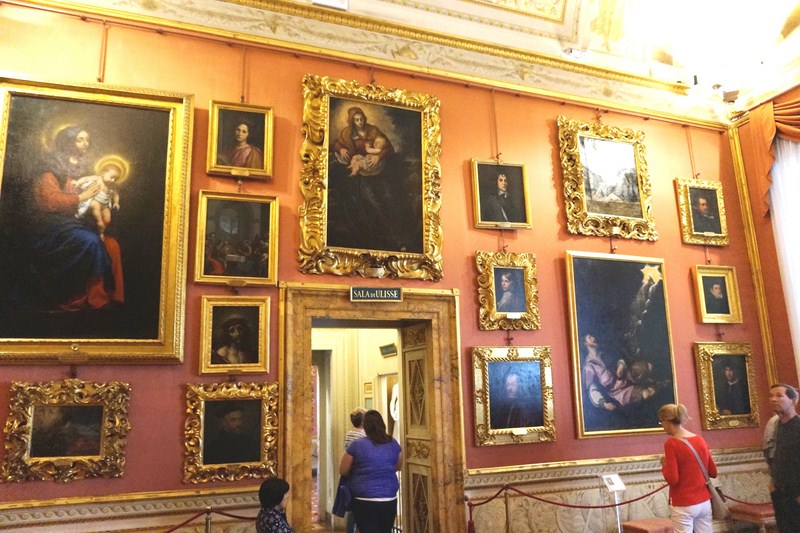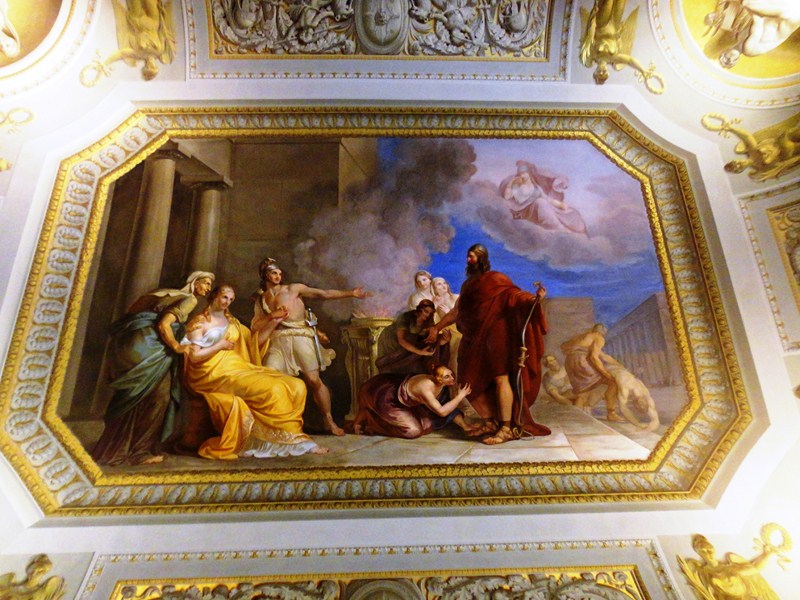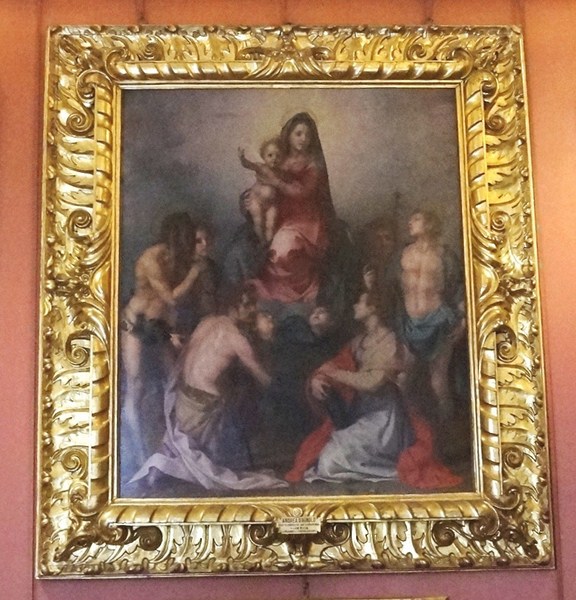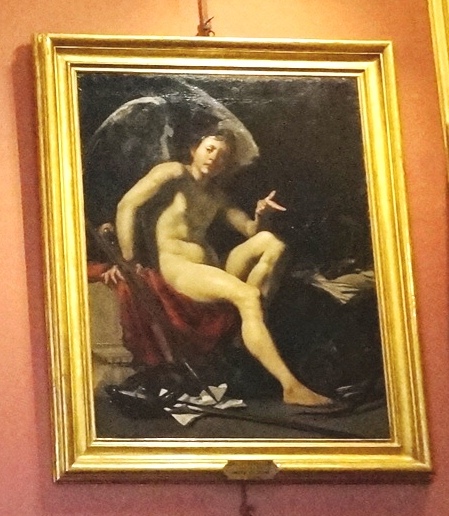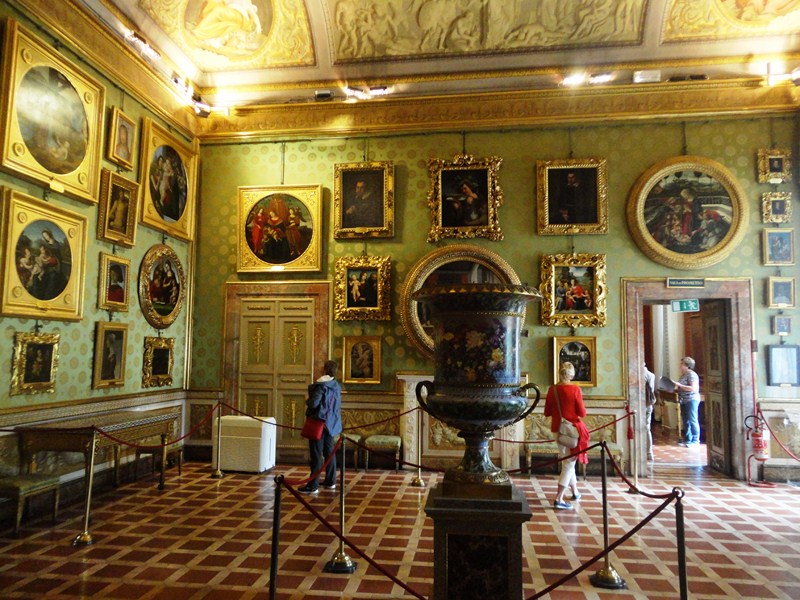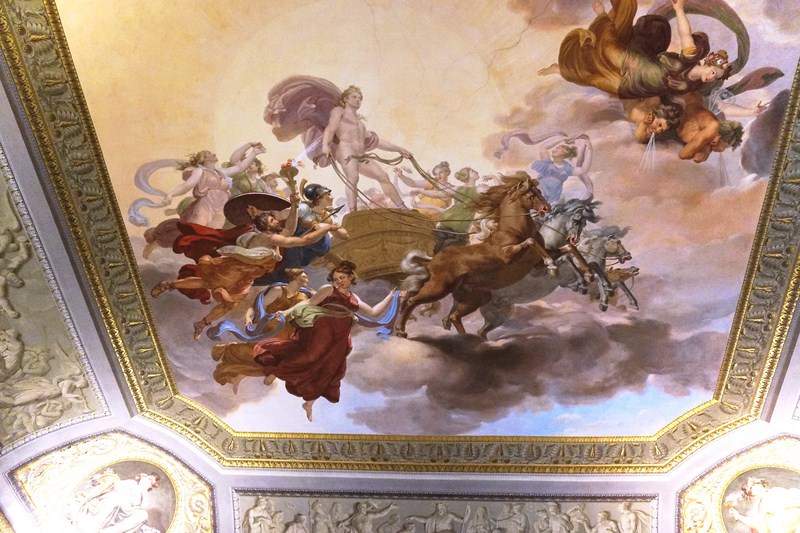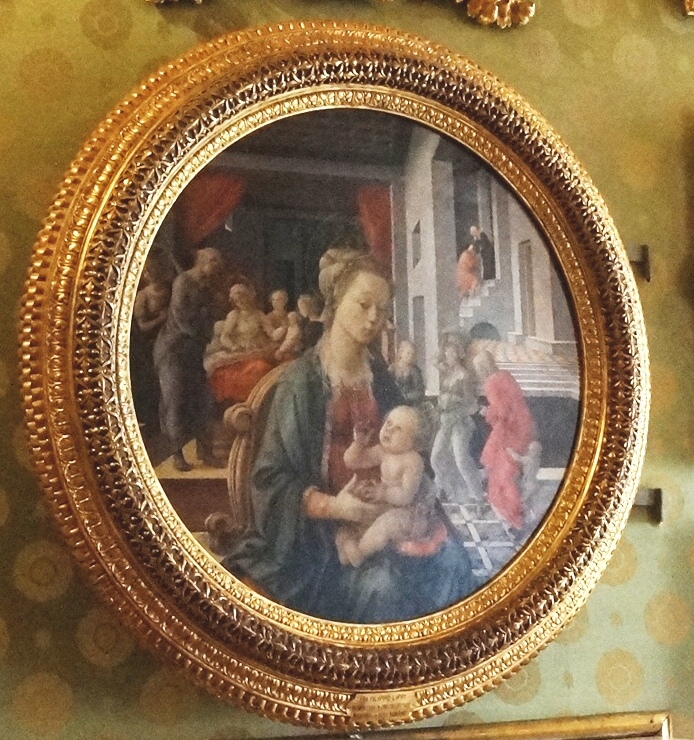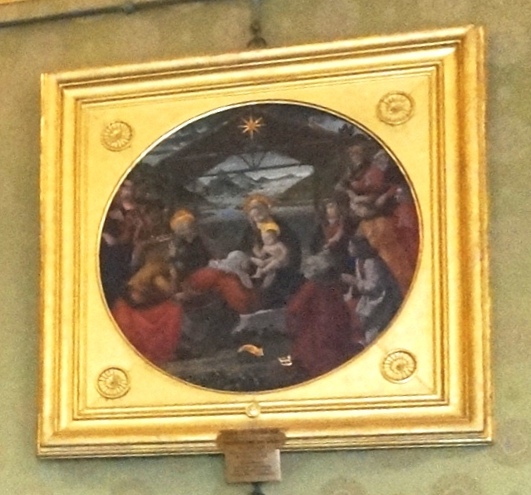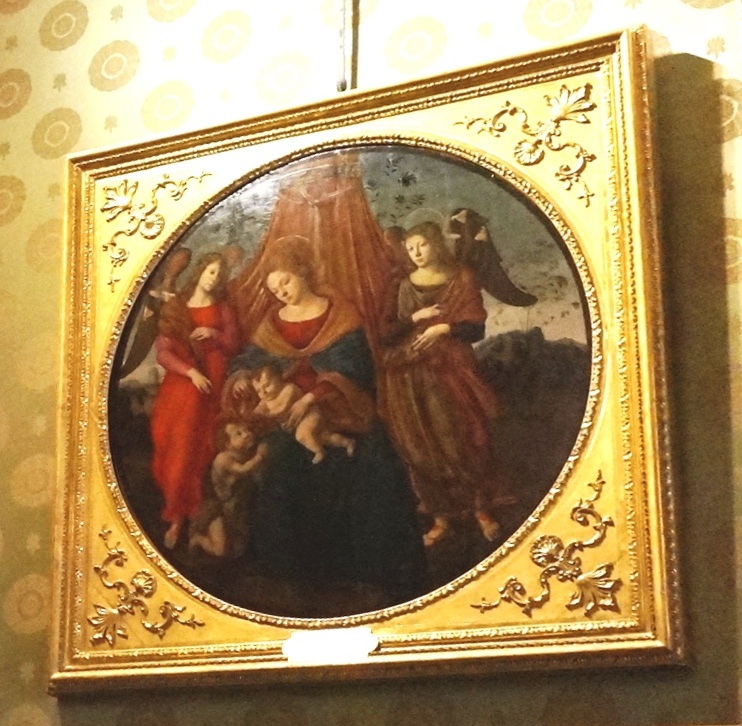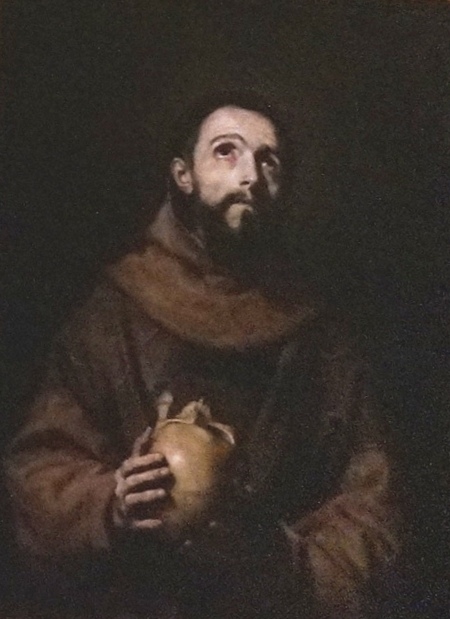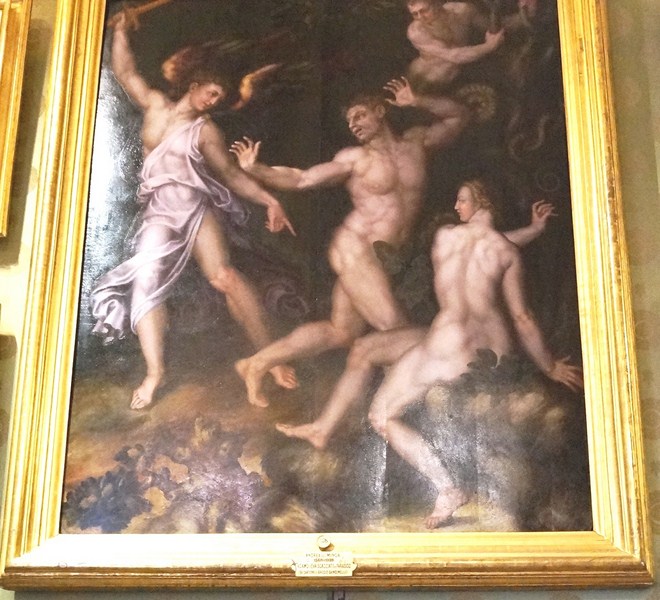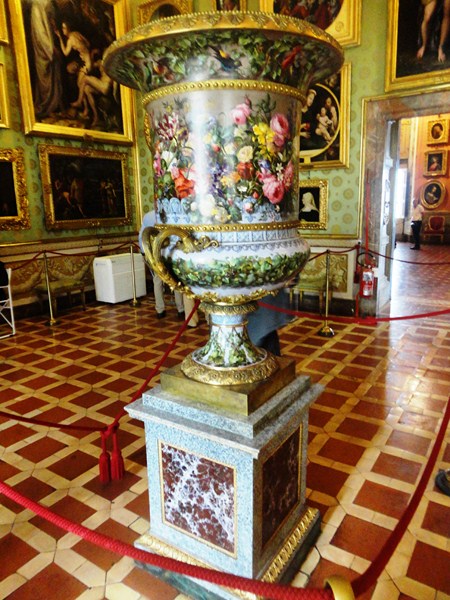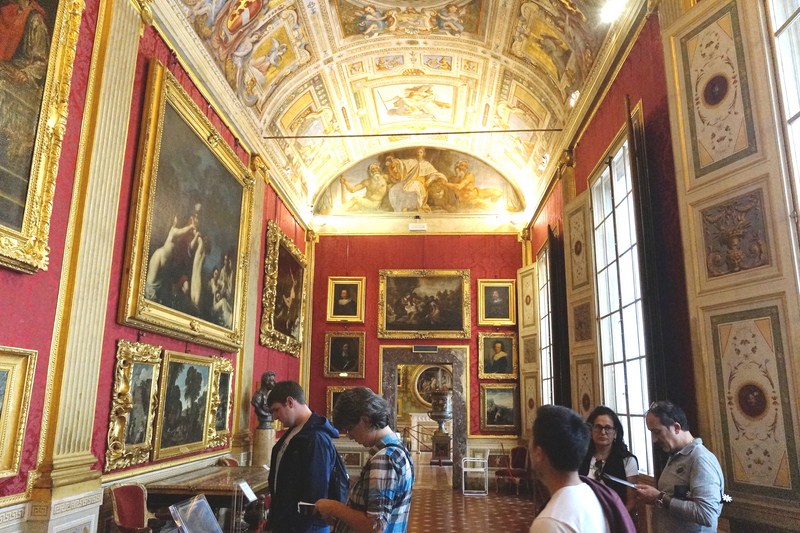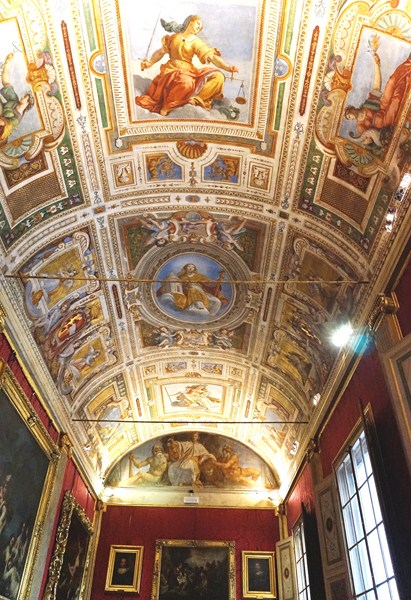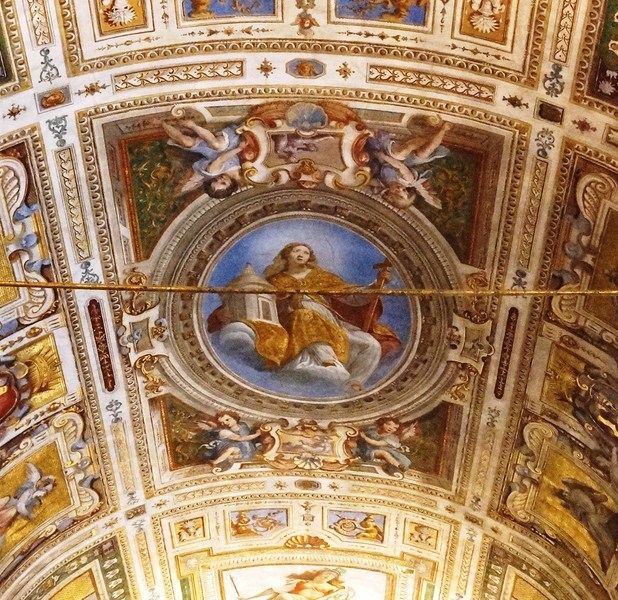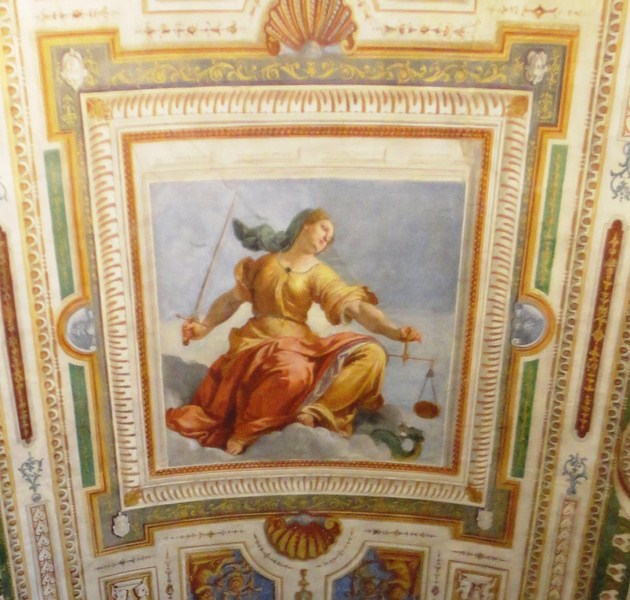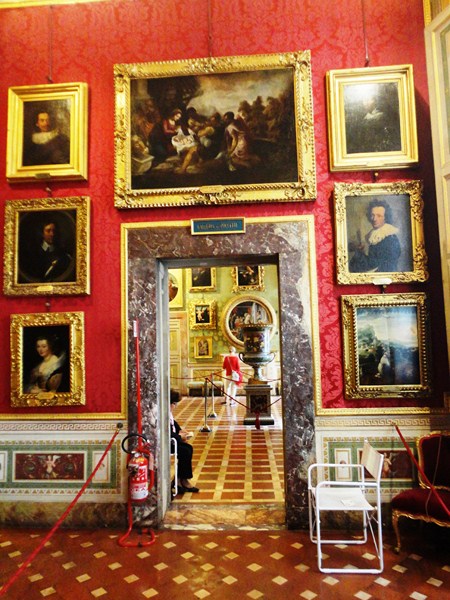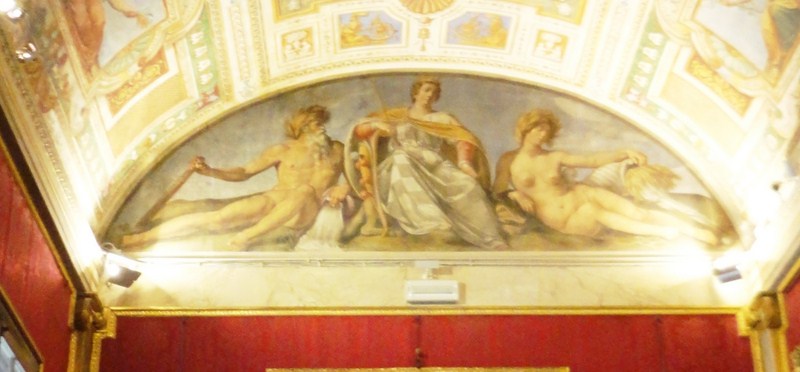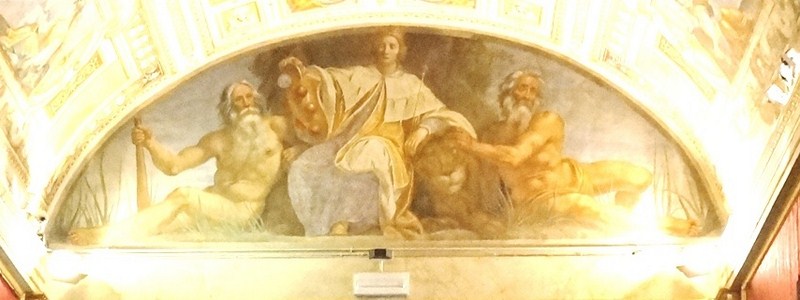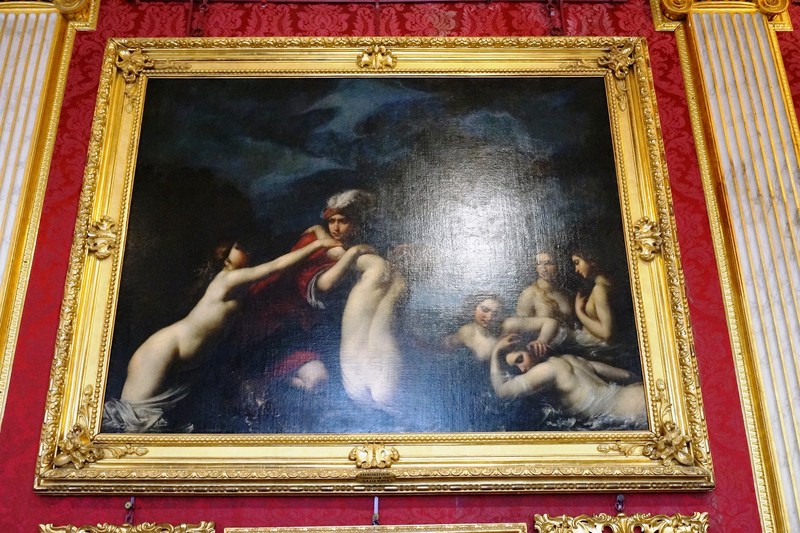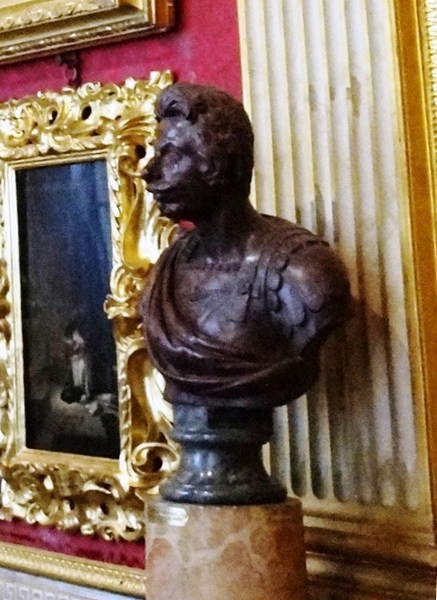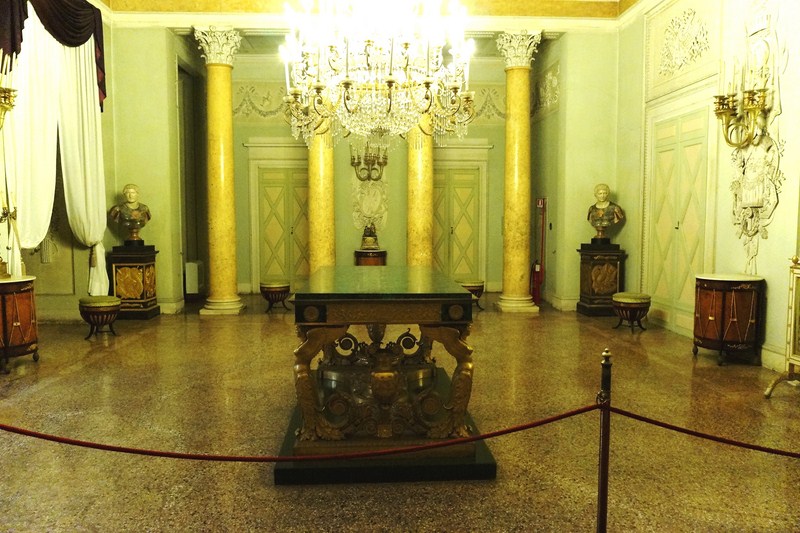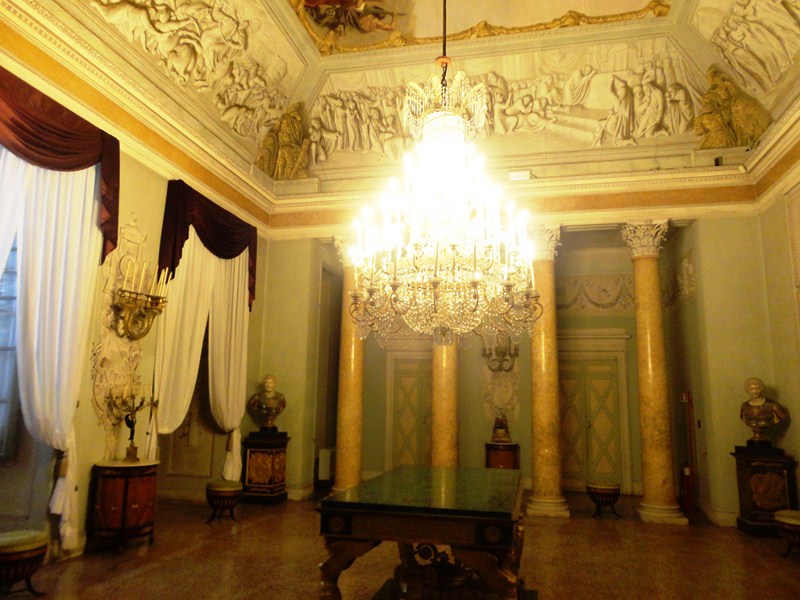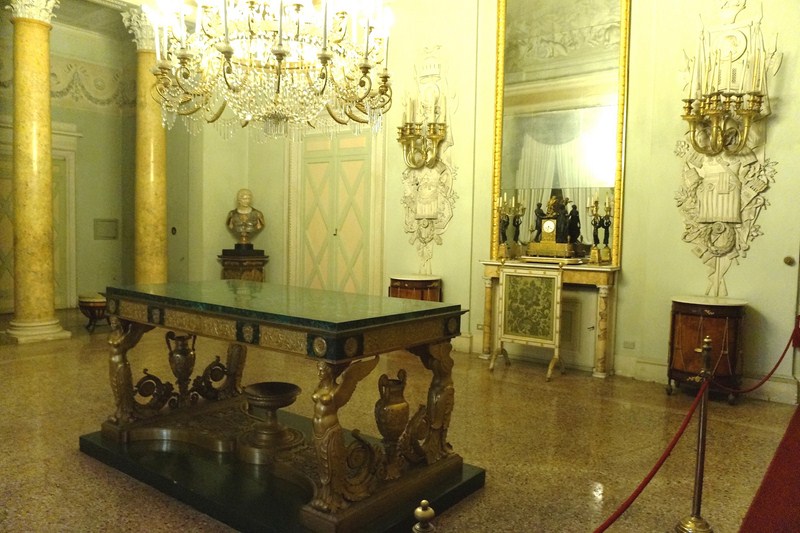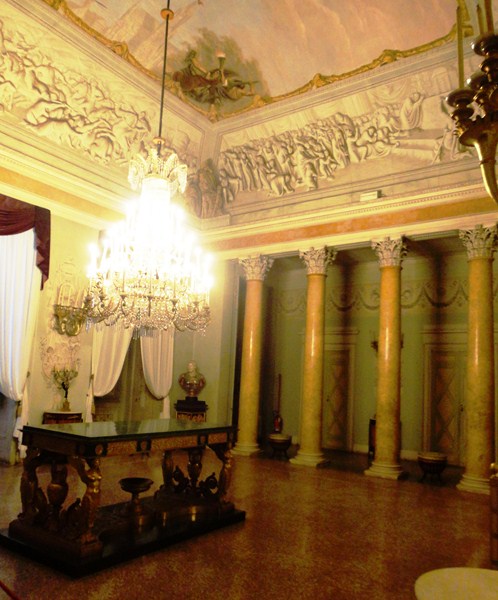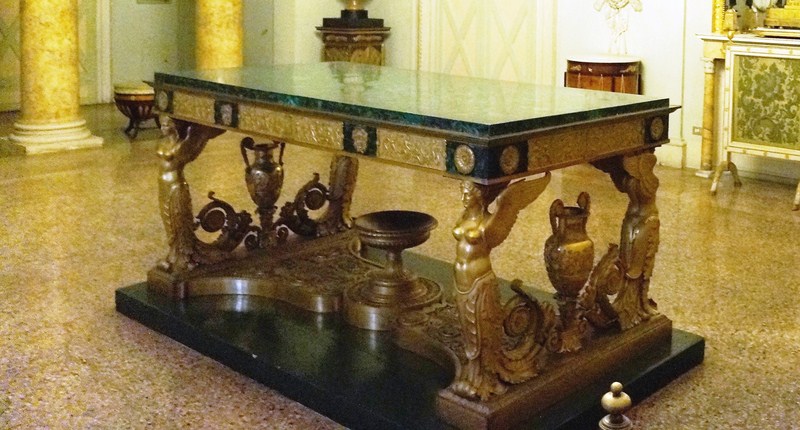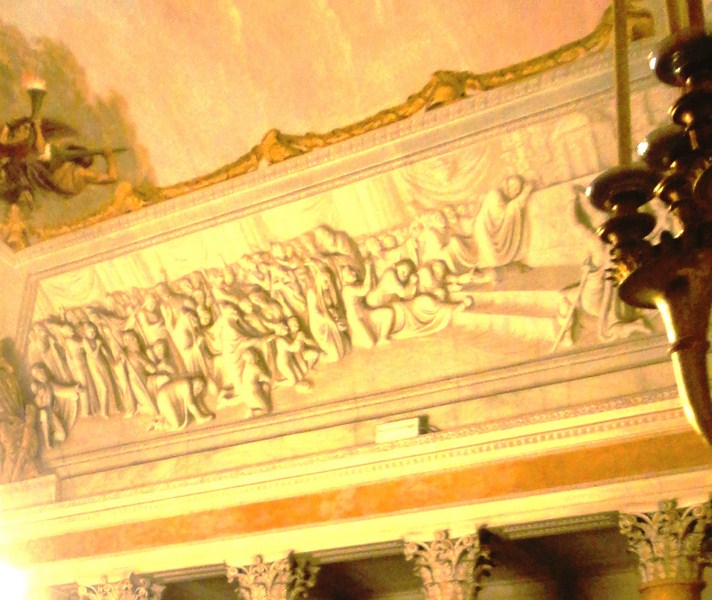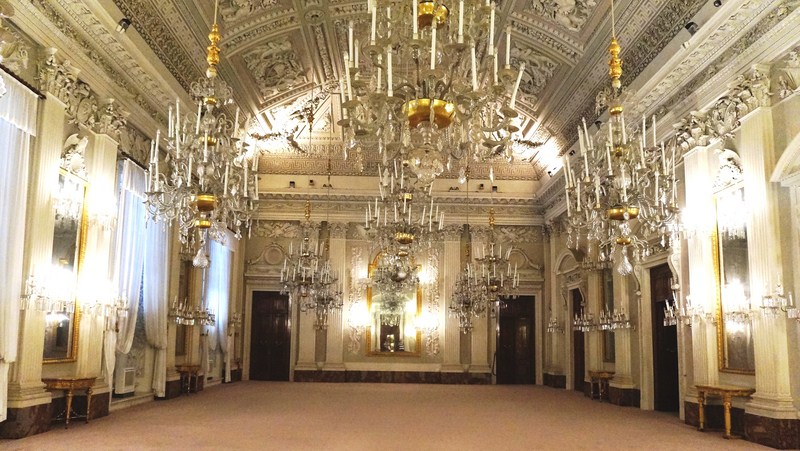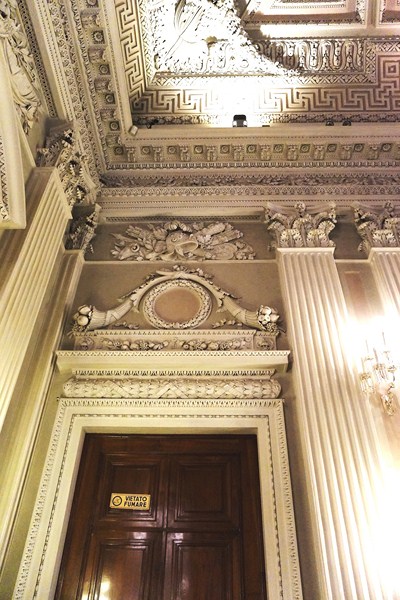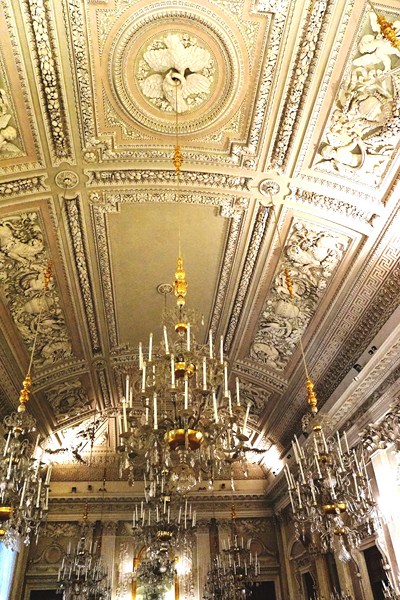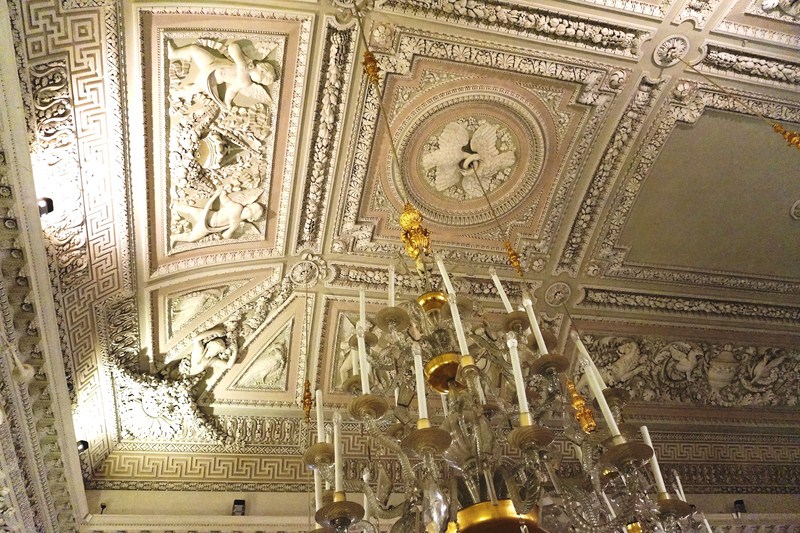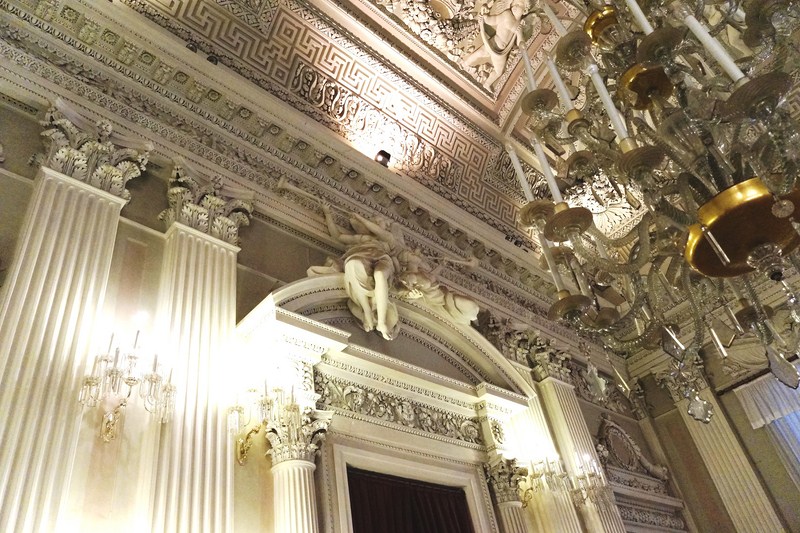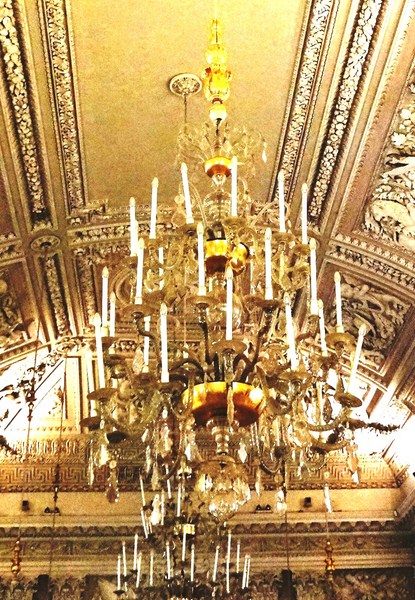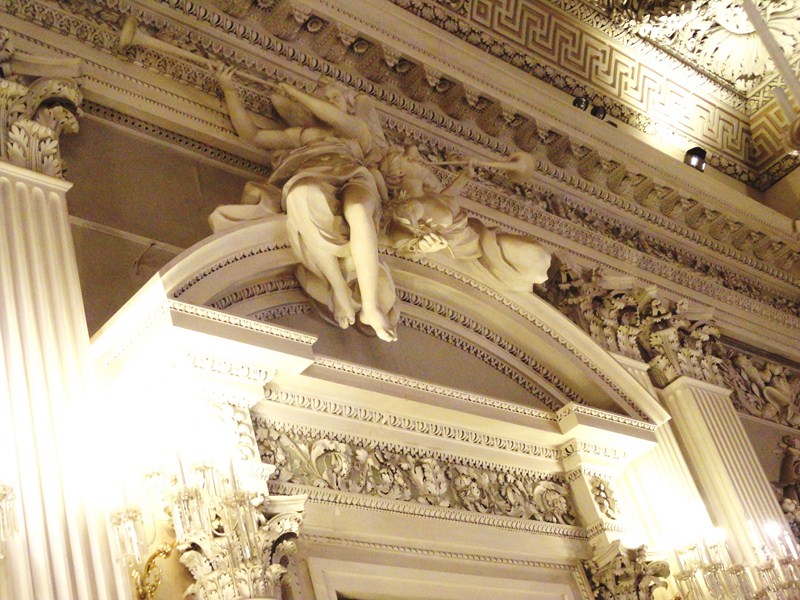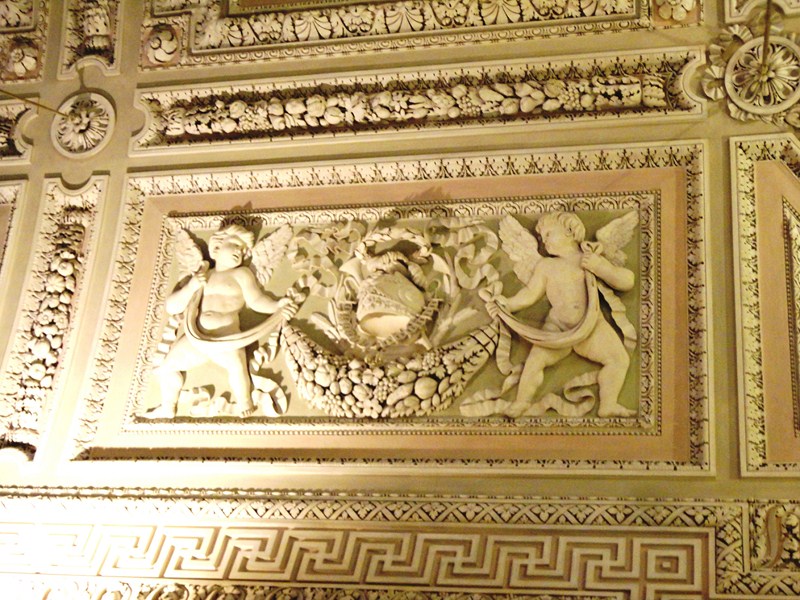During the period of the Medici court, the Hall of Apollo (Sala di Apollo) was formerly the antechamber of the “ordinary nobility,” used by gentlemen who were waiting to be received by the Grand Duke inside the Throne Room. It is dominated by a large altarpiece with the Sacred Conversation by Rosso Fiorentino (1522), the most important Florentine artist of early Mannerism together with Jacopo Pontormo, whose canvas was enlarged in the Baroque period to be adapted to the frame.
On the center of the ceiling vault is the fresco Medici Prince Brought before Apollo by Fame by Pietro da Cortona who provided the complete project (including the stuccos) and started the central figures in 1647 not long before the artist left Florence to return to Rome, delegating the rest of the assignment to his loyal pupil Ciro Ferri,
Ferri completed the decorations in the room 15 years later, between 1659-1661, after being appointed to do so by the Grand Duke, adding the frescos in the lunettes and the superb stucco cornice (a model that was then copied throughout Europe), based on the designs and cartoons left by his teacher Cortona.
The theme alludes to the ideal path of the political and moral education of the young prince, illuminated by Apollo and then guided along the path of knowledge by the laws governing the cosmos as evoked by Hercules holding the celestial globe, an obvious reference to Galileo Galilei’s recent discoveries and a symbol of the weight of the responsibilities of the future sovereign.
Ovals and plumes, in the stucco, are examples of great ancient rulers who resorted to poetry and culture. The stucco medallions below, showing some of the best-known feats of the Greek god, warns the future sovereign of the weight of responsibility from government and the need to be educated for the task by the Arts and by study.
The square frames show the emperors, including Augustus, intent upon listening to the reading of the Aeneid, or Alexander the Great receiving the poems of Homer, and condottieri from antiquity who favored the development of culture. In the corbels are the Muses, Apollo’s companions.
The pictorial cycle and the articulated group of white stucco and gilt figures that disrupt the Renaissance style of the architectural setting, introduces a significant new element, animating the ceiling with an illusion of male sculptures holding up the heavy festoons and satyrs wrapped in vine tendrils.
Also in the room are three works by Andrea del Sarto – the majestic and balanced Pietà di Luco (1523-1524), Holy Family Bracci (ca. 1523) and the Holy Family Medici (1529), one of his last works. Exhibited nearby are two other works by Titian – the Man with Glaucous Eyes (ca. 1525) and the famous Penitent Magdalene (ca. 1530), much copied by the artists who were able to admire her.
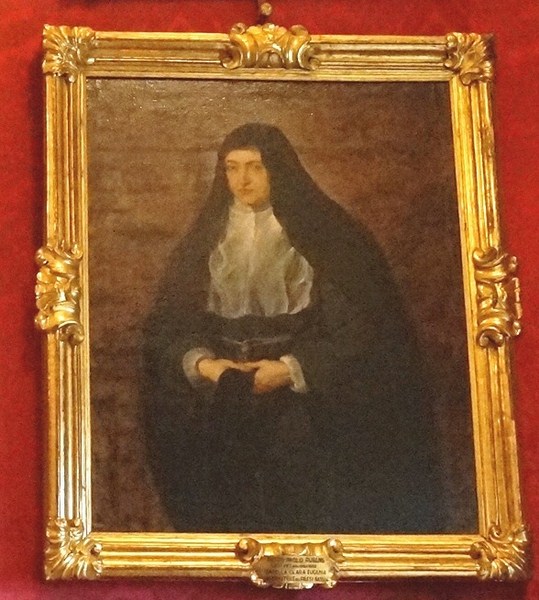
Portrait of the Infanta Isabella Clara Eugenia of Spain in the dress of a Clarissa (Pieter Paul Rubens)
There are also other important works of the Venetian school here such as the Portrait of Vincenzo Zeno (ca. 1565) by Tintoretto and the Nymph and the Satyr (1508-1512) by Dosso Dossi (actually the traditional title is incorrect because it is a scene inspired by Orlando Furioso). The Hospitality of San Giuliano (ca. 1612-1618) exemplifies the monumental style of the Florentine Alessandro Allori while Saint Peter Resurrects Tabita (ca. 1618) by the young Guercino and Cleopatra (1640), a mature work of Guido Reni, shows the grandeur of the Bolognese school of the seventeenth century.
Flemish art is also well represented here by the famous double Portrait of Charles I and Henrietta Maria of England by the school of Anton van Dyck, Portrait of the Infanta Isabella Clara Eugenia of Spain in the dress of a Clarissa (ca. 1625) by Pieter Paul Rubens and the Portrait of Vittoria della Rovere as the Vestal Tuccia (ca. 1640) by Justus Suttermans.
Other works in the Hall of Apollo include:
- Portrait of Francesco Maria de ‘Medici (Justus Suttermans, ca. 1663)
- Portrait of Baccio Bandinelli (copy from Andrea del Sarto)
- Madonna della Misericordia (workshop of Titian, ca. 1573)
- Augustus and the Sibyl (workshop of Garofalo, post 1537)
- Christ and the Adulteress (Ludovico Mazzolino, ca. 1526)
- Holy Family with St John (Caspar de Crayer, ca. 1650)
- Sant’Andrea (Simone Cantarini, ca. 1640-1650)
- San Giovanni Battista (Dosso Dossi)
- Portrait of Leopoldo de ‘Medici in the Cradle (Tiberio Titi, 1617)
- Holy Family with Saint Catherine of Alexandria and Saint Mary Magdalene (attributed to Girolamo Denti, ca. 1550)
- Deposition from the Cross (Il Cigoli, 1600-1608)
- Diogenes (Carlo Dolci, 1640-1649)
- Portrait of Federico Ubaldo della Rovere in the Cradle ( Alessandro Vitali)
- Portrait of an Alemannic Soldier (Niccolò Cassana, 1691)
- Male Portrait (Sebastiano Mazzoni?) (Giovanni Battista Langetti)
- Male Portrait (Cristofano Allori, ca. 1600-1605)
- Portrait of Kaspar Stoppe (Pieter Paul Rubens, ca. 1606-1607)
- Supper at Emmaus (Jacopo Pistoia, ca. 1570-1572)
- Judith and Holofernes (Jacopo Ligozzi, 1602)
- Saint John the Evangelist (Carlo Dolci, ca. 1671)
- Female Portrait (Cornelis de Vos, ca. 1624)
- Ecce Homo (copy from Sebastiano del Piombo)
- San Filippo Neri has the vision of the Madonna and Child (Carlo Maratta, ca. 1670)
- San Casimiro (Carlo Dolci, 1670-1671)
- Portrait of Olimpia Aldobrandini Jacob Ferdinand Voet, ca. 1665-1670)
- Portrait of Cavalier Brandolini (?) (Justus Suttermans, Ca. 1640 – 1650)
- Table with top depicting Etruscan Vases (Florentine manufacture of the century XVIII, 1784)
Hall of Apollo: First Floor, Palatine Gallery, Palace, Piazza de’ Pitti, 1, Florence, Italy. Tel:+39 055 294883. Open Tuesdays-Sundays, 8:15 AM – 6:50 PM. Admission: Palatine Gallery (€8.50), Silver Museum (€6.00), Gallery of Modern Art (€8.50), Costume Gallery/Porcelain Museum/Boboli Gardens/Bardini Garden (€6.00).
How to Get There: Take the C3 or D bus to the Pitti stop.

